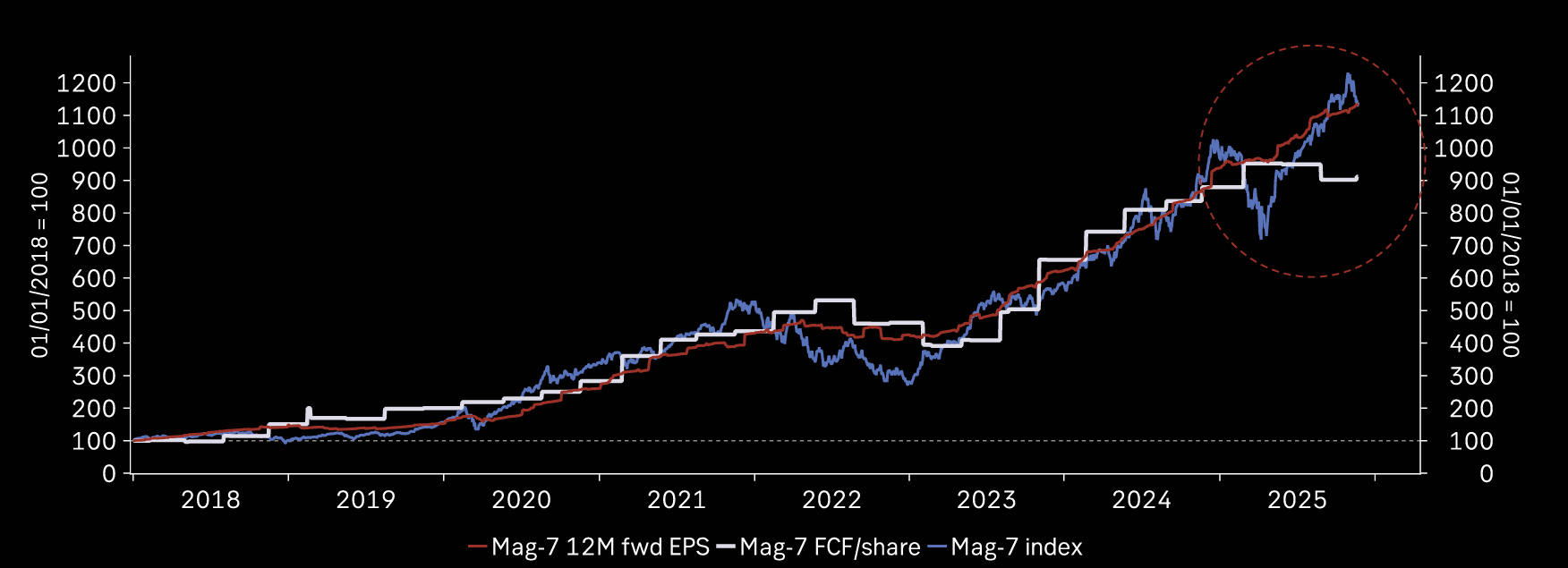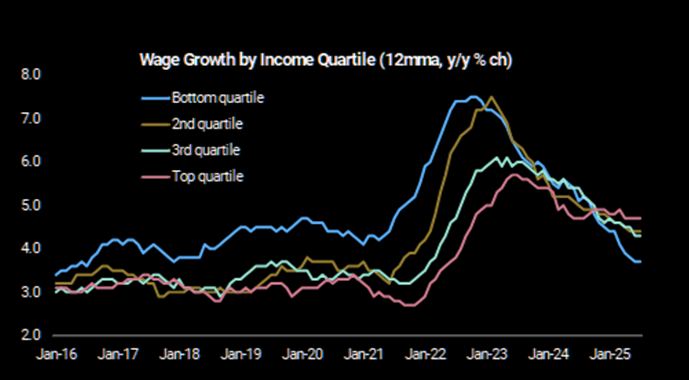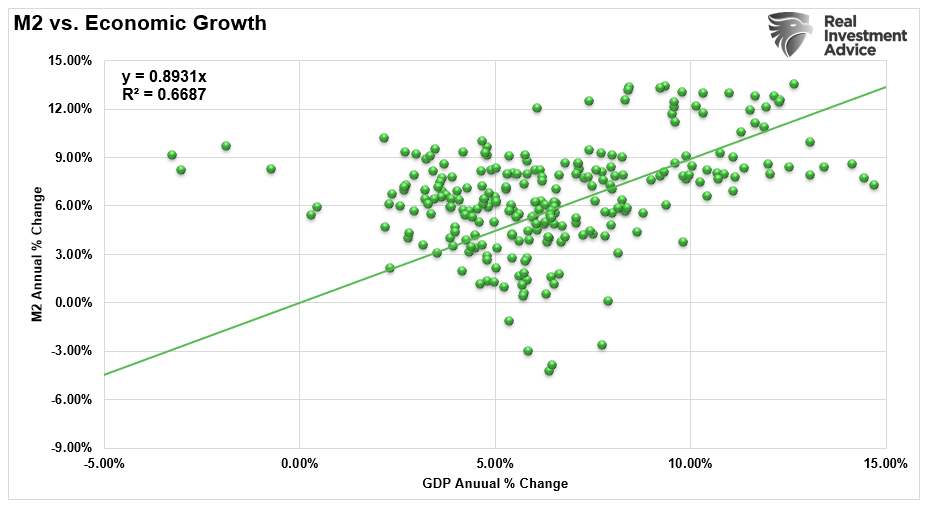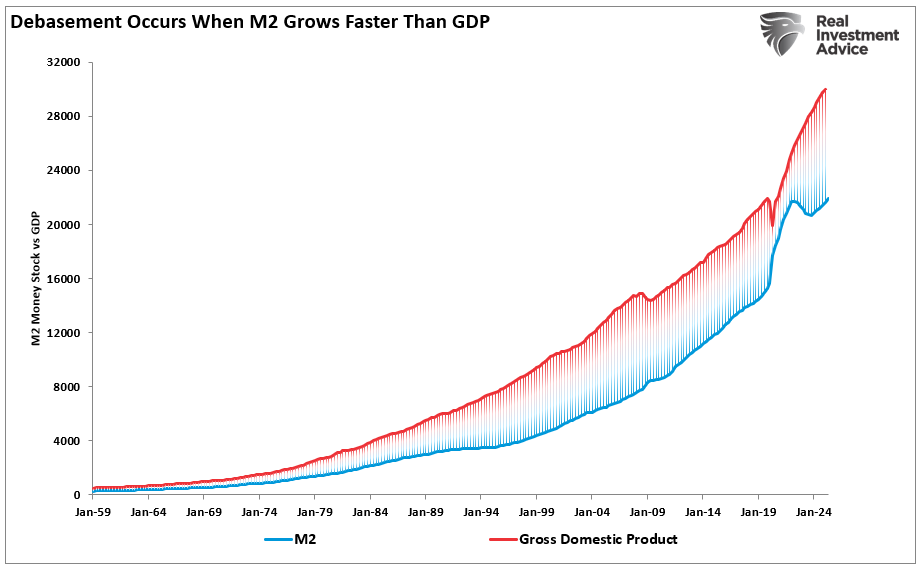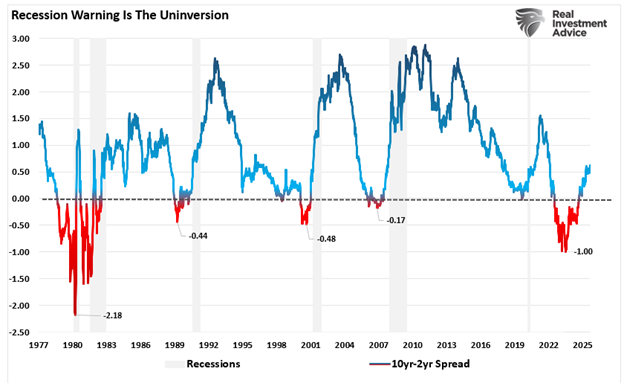In last week’s article, we explained how the yield curve could cause GDP to contract in The Yield Curve and GDP – a causal relationship. Some of our readers suggested the analysis was wrong on back of an outdated view of modern money creation. The critics claim modern banks are not dependent on central bank reserves to create additional money; citing a Bank of England article from 2014 (which we have been well aware of)
[A] common misconception is that the central bank determines the quantity of loans and deposits in the economy by controlling the quantity of central bank money — the so-called ‘money multiplier’ approach. In that view, central banks implement monetary policy by choosing a quantity of reserves. And, because there is assumed to be a constant ratio of broad money to base money, these reserves are then ‘multiplied up’ to a much greater change in bank loans and deposits. For the theory to hold, the amount of reserves must be a binding constraint on lending, and the central bank must directly determine the amount of reserves. While the money multiplier theory can be a useful way of introducing money and banking in economic textbooks, it is not an accurate description of how money is created in reality. Rather than controlling the quantity of reserves, central banks today typically implement monetary policy by setting the price of reserves — that is, interest rates.
In other words, the article suggest commercial banks themselves determine the amount of reserves, not the central bank. We do not dispute that claim; on the contrary we have argued that in today’s world that is a very accurate description of how commercial banks operate. We have said that the market for money is the only market in the whole world which operate on Keynesians principles; where demand create its own supply and not vice versa.
It is obviously hopeless to talk about a market when said market basically defy logic and economic laws; needless to say, the ‘market’ for money has become a Frankenstein monster concocted by modern central planners so it is not really a market at all; not in the organic, symbiotic, self-correcting way we think of markets anyhow. Rather it is a statist’s edict designed to support today’s fiat currency system.
Still, the Keynesian constructed ‘market’ does not invalidate the Misesian view of money creation in the economy as we described it in our previous article.
To understand why, consider a situation where the banking system want to expand credit (and by extension the money supply) to an eager public;
- As the money supply increases, more money will inevitably chase existing assets (credit creation does not create additional asset unless it is backed by real savings) which lifts the money price of said assets – higher supply of money reduce the price of money. Higher asset prices means higher valued collateral, which means banks will be happy to extend even more credit and so on into a virtuous credit cycle.
- As banks, in competition with other banks, want to be part of the good times they must compete for funds to expand their balance sheet. In a true market a process of bidding for scarce funds would raise the price of available bank funding – deposits, capital, money markets, debt. With the price on bank funding goes up, so do the price of credit to the public. If not, banks interest margin would fall and banks profitability go negative. As interest rates move higher it will eventually propagate throughout the financial system; giving investors the signal, they need to assess the availability of real funds and savers the signal they need to take coordinated (market) action regarding their own saving behavior. The credit upswing would, in a market, rebalance itself before it got too distanced from reality.
- In today’s ‘market’ on the other hand this effect will first be felt in the interbank market as an expanding bank must bid for reserves from other banks. As more and more banks try to expand their business, competition for reserves will raise interest rates, which will again provide a valuable signal to society trying to overextend itself. However, with central banks targeting interest rates in the interbank market, id est the price of reserves, a higher interest rate will be deemed counterproductive from a central banker’s point of view. His job is to manipulate the price of reserves after all. If the ‘market’ does not correspond to his view of what the rate of interest on reserves ought to be, the central bank must intervene to supply more reserves.
This construct is completely perverted in the sense that credit demand beget more credit supply which beget even more credit demand through higher asset prices ad infinitum. The fact that credit is not something that can be given to anyone, but is something one already have seem lost on the Keynesian architects who came up with this shaky edifice. Today’s system is essentially a system that can drift ever further away from reality through temporal discoordination, resource misallocation and eventually capital consumption. The final coordinating mechanism is nothing less than economic recession. Without them society would regress, impoverishing first the poor, then the middle class and in the end all socioeconomic layers of society. We maintain that Nixon’s severing the, admittedly weak, tie to gold coupled with academic zeal for market interventionism in a quest to reach the Keynesian utopia of a permanent boom is the main culprit for the vanishing Western middle class (see That 70s Show Episode 1, 2, 3, 4)
Please note that there is nothing so far that invalidates our claim that commercial banks depend on base money to expand their own balance sheet. It is true that financial shenanigans (commonly referred to as deregulation) helped bring forward more ‘efficient’ use of existing reserves and capital, but nowhere did we claim the credit multiplier to be constant. Quite the opposite, we maintained that fluctuations in both the multiplier (bank leverage) and velocity (household- and businesses demand for cash balances) are the very determinants of GDP growth when looking at GDP for what it really is; nothing more than monetary inflation.
We also find the criticism odd given the fact that the article referred to, states, on page one, very clearly that “[m]onetary policy acts as the ultimate limit on money creation”.
It is half-true that the causal relationship in terms of reserve expansion during the credit upswing, under today’s monetary regime, goes from the commercial banking system to the central bank for a given rate of interest; but note that that is only because the central bank refuse to allow interest rates to deviate from what they consider the correct rate. Commercial banks, either through prudence or statutory limitations, will have to carry a certain amount of reserves to meet expected withdrawals no matter what. The fact that commercial banks can themselves determine the overall amount of reserves available to them (at the central bank administered price) does not alter the fact that they are dependent on central bank reserves for credit expansion. The central bank can at any time of its own choosing restrict the commercial banking system. Just because central bank’s preferred tool is the price of reserves instead of reserves proper does not invalidate our argument at all.
In the credit downswing things become more complicated though, especially at the ZLB. Since the central bank operate through the price of reserves, but there are no takers even at a price of zero the central bank try to push reserves out in the system hoping someone or something will take it.
No matter, the central bank intervene in credit markets through reserve intervention; whether by price manipulation or by active management of available reserves through QE at ZLB. Which tool used is irrelevant in terms of understanding the credit multiplicator.
Tags: Austrian economics,Economics,Regulation


















